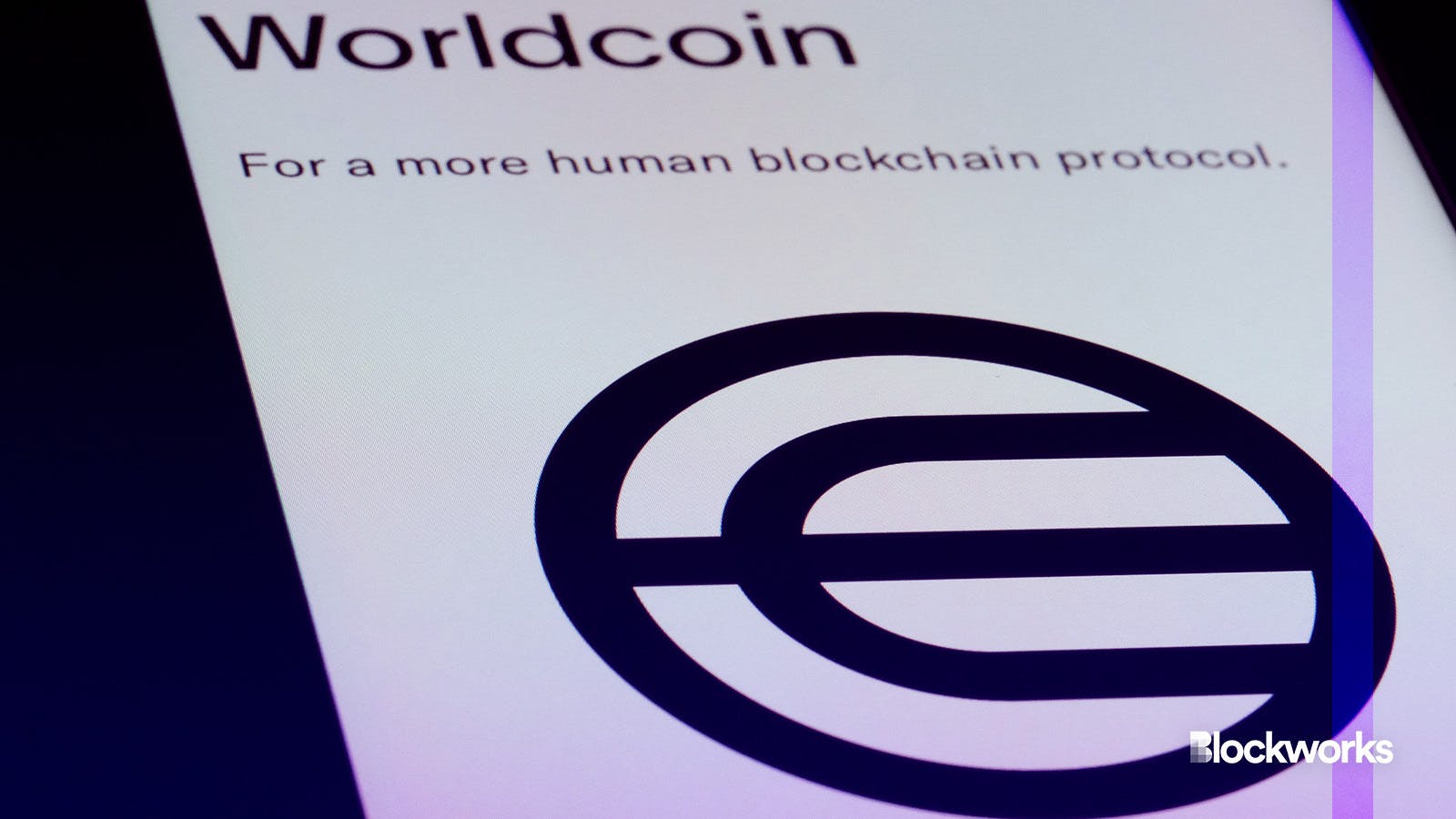Worldcoin continues gradual open sourcing by sharing Orb core code
Code for the Orb’s main application and private key storage were released with some redactions

Robert Way/Shutterstock modified by Blockworks
Sam Altman-backed Worldcoin has met skepticism for its eye-scanning Orb, a device it uses to create biometrically unique accounts for its more than four million users. But in a show of transparency, Worldcoin is making the core software undergirding the Orb open source to the public, they announced in a blog post Friday morning.
The Orb’s transition to open source has been a gradual one. Worldcoin had previously released details on the device’s hardware and made its iris recognition component open source, but hadn’t given the public details about its main software.
This latest open-sourcing of the Orb’s core functionality gives a peek into how the Orb converts iris scans into unique verifications within the Tools For Humanity-created World App. However, the Orb’s main application does have some code removed from the internal version. The removed bits of code relate to fraud checks, the blog post said.
Read more: Worldcoin to continue working with regulators after international controversy
Worldcoin was co-founded by Altman alongside Max Novendstern and Alex Blania in 2019. The project, whose tokens are currently unavailable to US residents, launched in July worldwide. Although US residents can’t access Worldcoin’s WLD tokens, part of the project’s eventual plan to create a global basic income, they can still have their eyeballs scanned and create a World ID in the app.
Worldcoin’s Orbs scan individuals’ irises to create unique IDs. It also distributes its WLD token to users “just for being a unique individual.” Altman and Blania cast Worldcoin last summer as a potential path to an AI-enabled scheme for universal basic income.
2,000 Orbs exist, and they are manufactured in Europe, according to a spokesperson for The Worldcoin Foundation, a non-profit supporting Worldcoin’s development. The Orb is built with the NVIDIA Jetson, a popular computer board for embedded applications.
Worldcoin faces a challenge in convincing lawmakers it can be trusted, in the project’s ideal scenario, with biometric data for most or all adults in the world.
Speaking with an Orb engineer over the summer, one Blockworks journalist discovered that if you cut off someone’s face, including gouging out their eyes, and then draped it over your own face, you could register as them with a Worldcoin scanner and steal their identity. The Orb engineer promised that the team had not tested this particular edge case, but said that it would work.
Regulators from several governments have raised privacy concerns regarding Worldcoin. Spain began a temporary block on Worldcoin data collection earlier this month. Worldcoin retaliated with a lawsuit over what it says is an unjustified ban.
Worldcoin emphasizes that its World IDs are kept private from developers through zero-knowledge proofs, which can verify someone’s ID is real without needing to reveal their identity. Individuals’ data is also encrypted in such a way that only they can decrypt it from within the World App, Worldcoin has said.
With most of the Orb’s software being made public, the main components of the Worldcoin ecosystem yet to be open-sourced are the World App where World IDs are stored, and the uniqueness service, a piece of the Orb that verifies only unique humans are added to the platform.
Along with the core, Worldcoin also released some of the code for its secure element, which stores a private signing key that protects user data. The secure element is cryptographically paired to the NVIDIA Jetson during manufacturing.
With the code behind Worldcoin’s Orb and iris scanning technology being made open source, Worldcoin’s foundation is fine with the tech being built on by others.
“The Worldcoin Foundation welcomes additional, responsible development of proof of humanness verification hardware which is in part why hardware and software components of the Orb have been open-sourced,” the spokesperson said.
Get the news in your inbox. Explore Blockworks newsletters:
- The Breakdown: Decoding crypto and the markets. Daily.
- 0xResearch: Alpha in your inbox. Think like an analyst.






